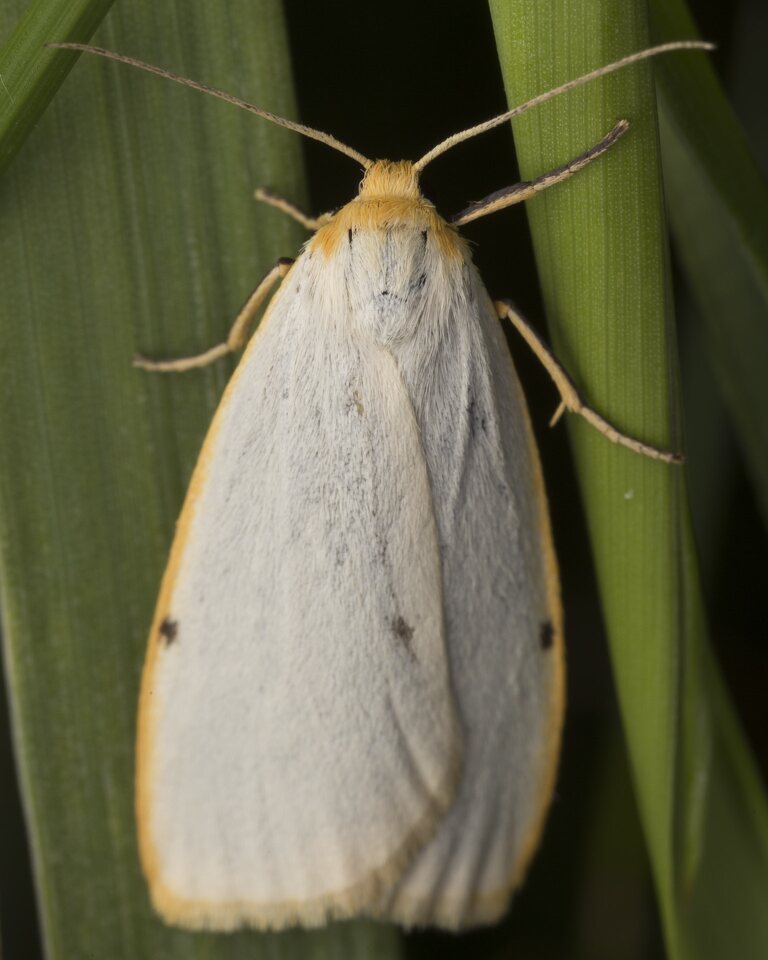
Cybosia mesomella · balsvoji kerpytė
- four-dotted footman
- Elfenbein-Flechtenbärchen
- balsvoji kerpytė
- bālganais ķērpjlācītis
- porostnica szeroka, łada dwukropka
https://en.wikipedia.org/wiki/Cybosia This species can be found in most of Europe except Spain, in the east Palearctic realm and in the Near East. Cybosia mesomella prefers warm, moist and sunny environment, deciduous and mixed forests, heaths, moorland, damp grassland, fens, wet meadows and open woodlands.
The wingspan is 25–33 mm. The basic colour of the forewings may be yellow or ivory greyish with yellow borders. The forewings show in the middle four small black dots (hence the common name of this species). The hindwings are grey, sometimes with yellowish edges. The thorax and the abdomen are whitish, covered with fine hairs.
This species has one generation per year. Females lay eggs in early July on the larval food plants. The eggs hatch in August or early September. The larvae overwinter and pupate the following spring, from May up to the beginning of June. The moths fly at dusk from June to mid-August depending on location. The larvae feed mainly after dark on low vegetation such as heather, willows, Leontodon autumnalis, Vaccinium uliginosum. They are lichen and algae feeders like most other lithosiines.
‥
0 comments
Add a comment